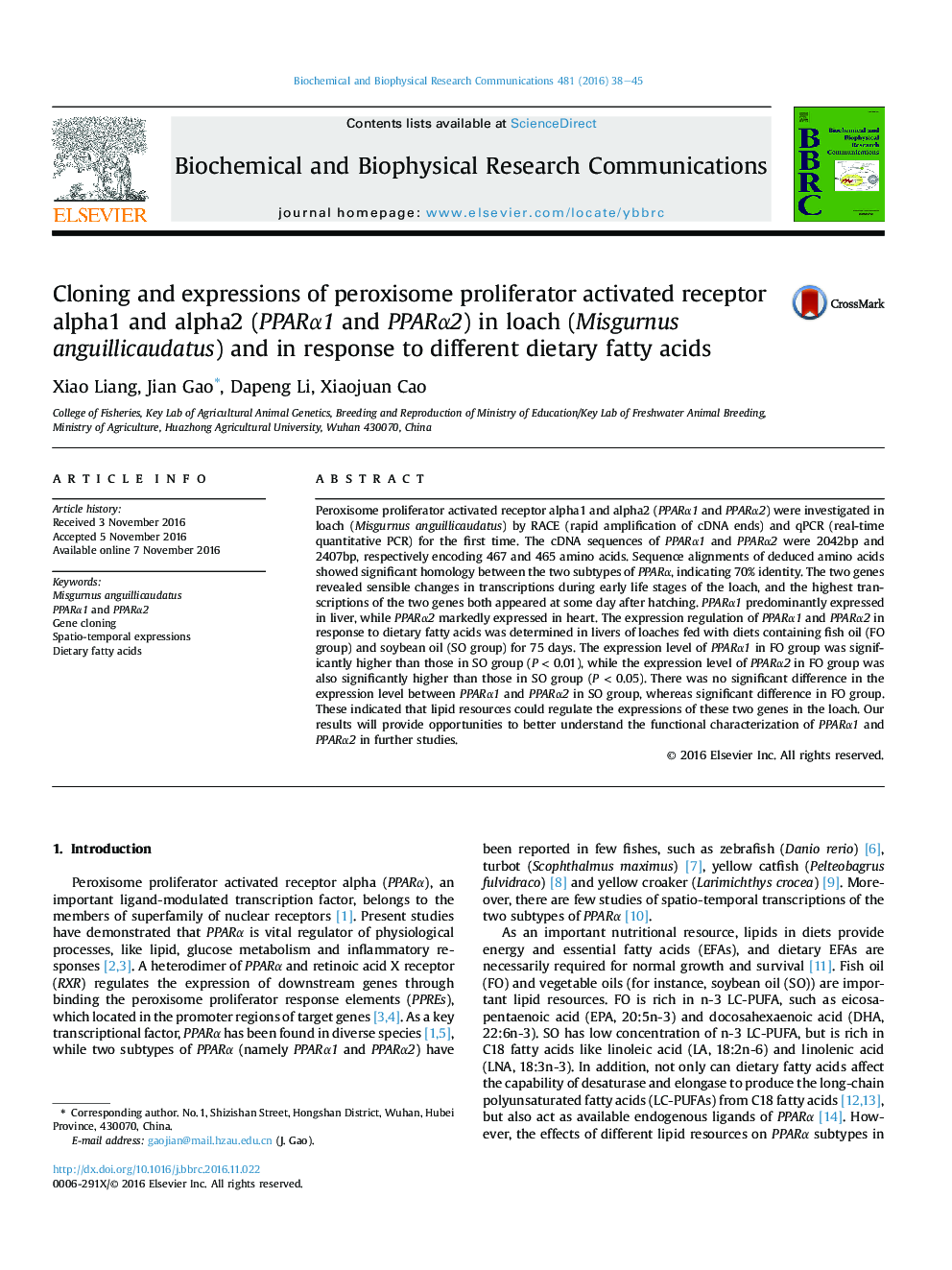| Article ID | Journal | Published Year | Pages | File Type |
|---|---|---|---|---|
| 5506470 | Biochemical and Biophysical Research Communications | 2016 | 8 Pages |
Abstract
Peroxisome proliferator activated receptor alpha1 and alpha2 (PPARα1 and PPARα2) were investigated in loach (Misgurnus anguillicaudatus) by RACE (rapid amplification of cDNA ends) and qPCR (real-time quantitative PCR) for the first time. The cDNA sequences of PPARα1 and PPARα2 were 2042bp and 2407bp, respectively encoding 467 and 465 amino acids. Sequence alignments of deduced amino acids showed significant homology between the two subtypes of PPARα, indicating 70% identity. The two genes revealed sensible changes in transcriptions during early life stages of the loach, and the highest transcriptions of the two genes both appeared at some day after hatching. PPARα1 predominantly expressed in liver, while PPARα2 markedly expressed in heart. The expression regulation of PPARα1 and PPARα2 in response to dietary fatty acids was determined in livers of loaches fed with diets containing fish oil (FO group) and soybean oil (SO group) for 75 days. The expression level of PPARα1 in FO group was significantly higher than those in SO group (P < 0.01), while the expression level of PPARα2 in FO group was also significantly higher than those in SO group (P < 0.05). There was no significant difference in the expression level between PPARα1 and PPARα2 in SO group, whereas significant difference in FO group. These indicated that lipid resources could regulate the expressions of these two genes in the loach. Our results will provide opportunities to better understand the functional characterization of PPARα1 and PPARα2 in further studies.
Related Topics
Life Sciences
Biochemistry, Genetics and Molecular Biology
Biochemistry
Authors
Xiao Liang, Jian Gao, Dapeng Li, Xiaojuan Cao,
